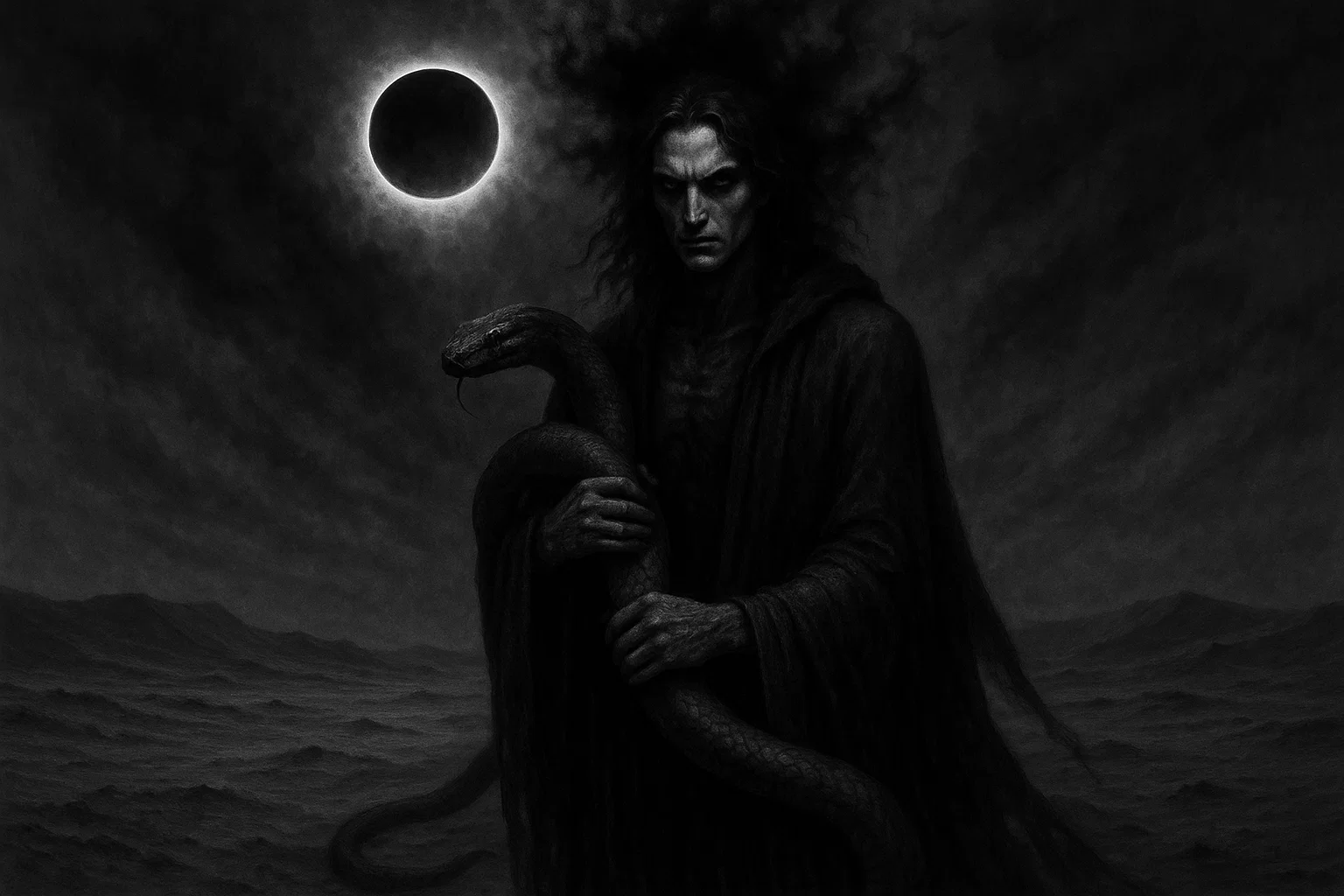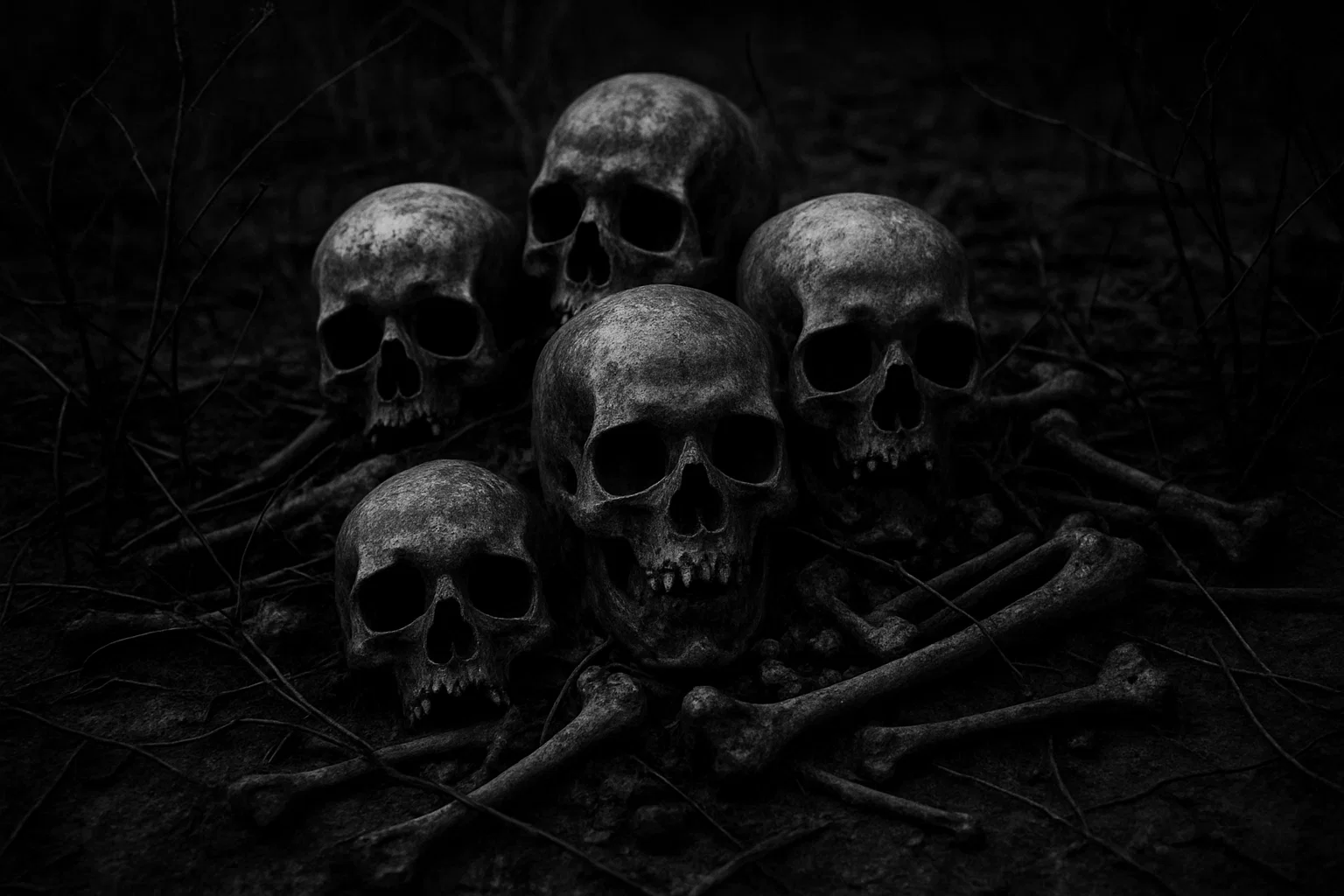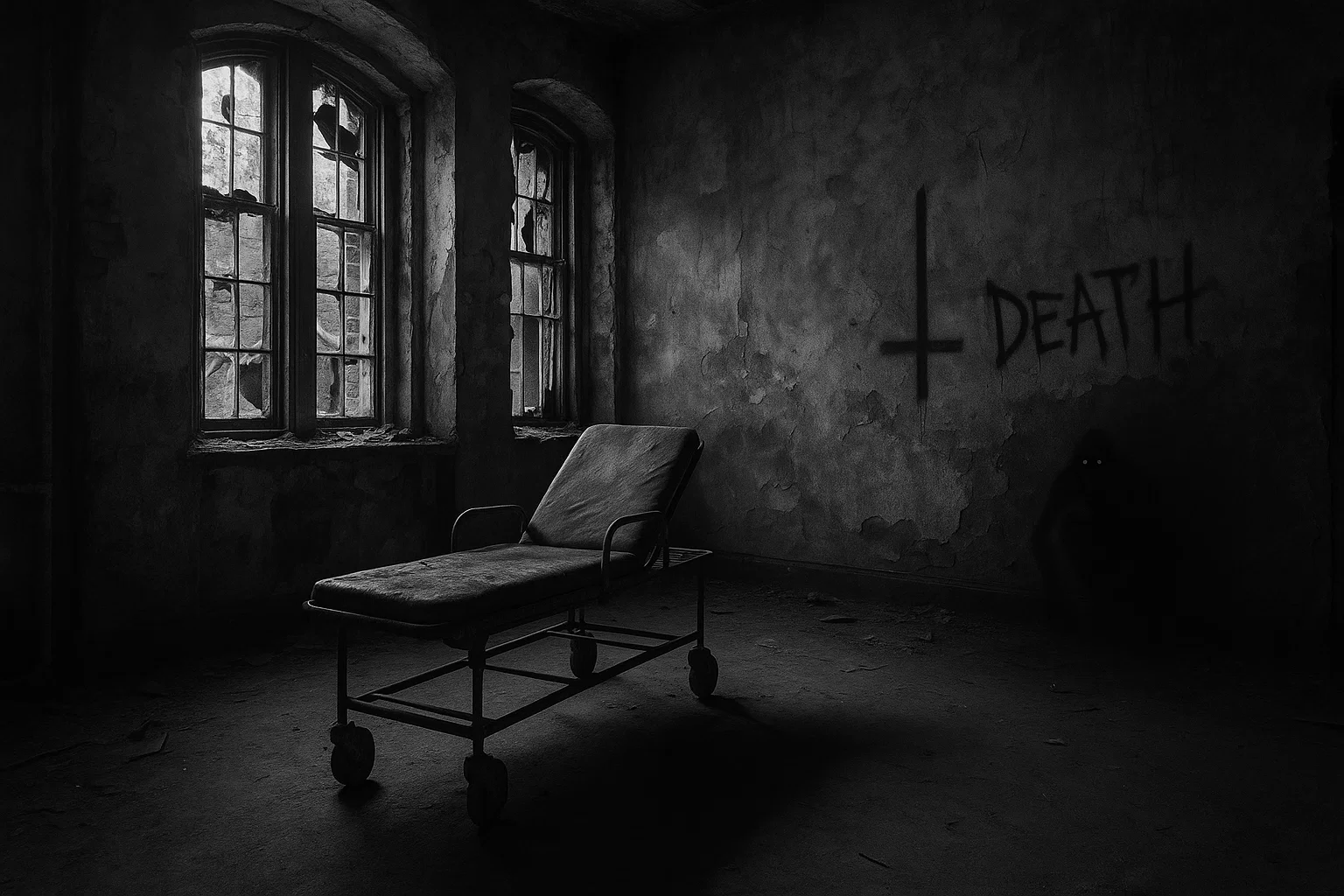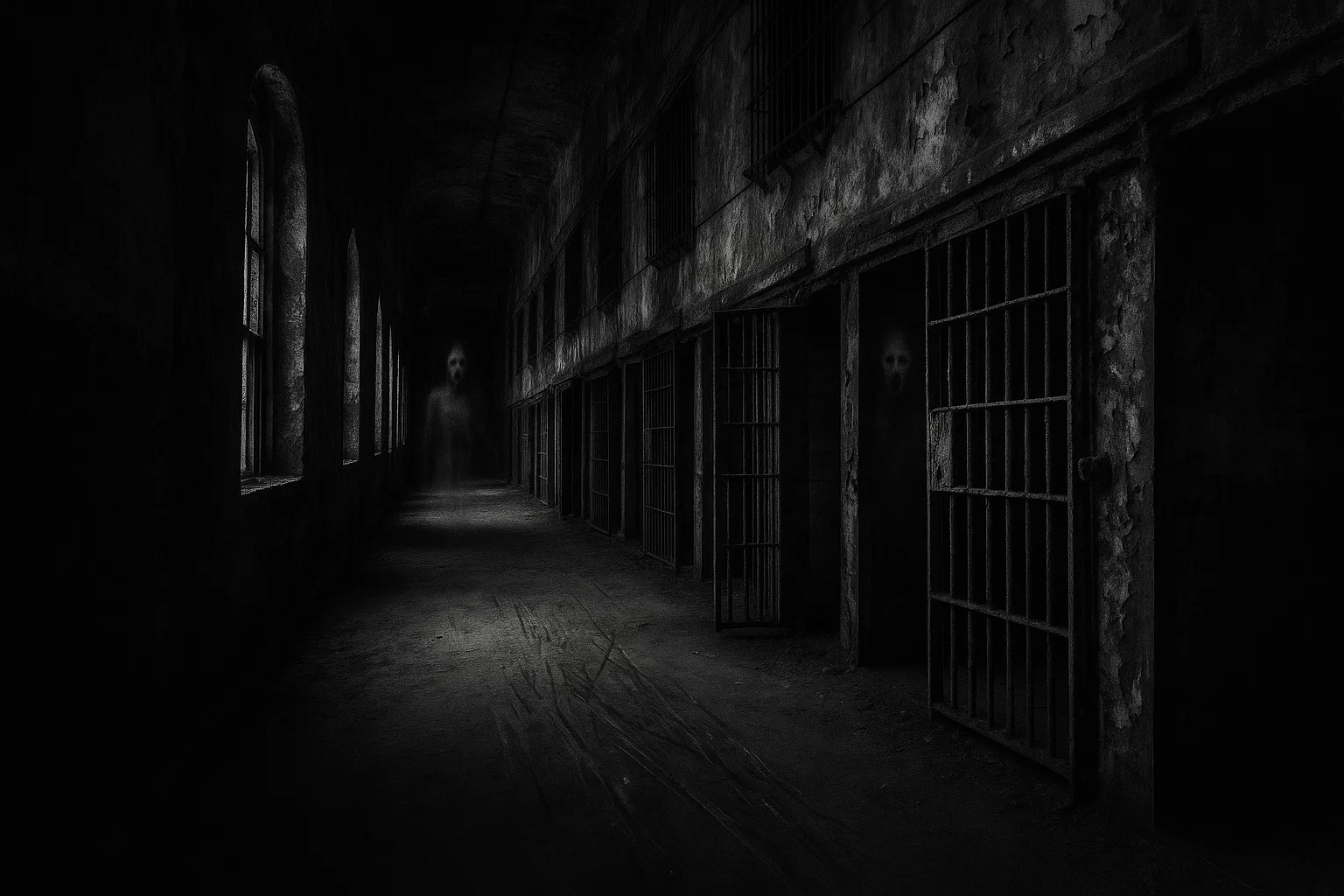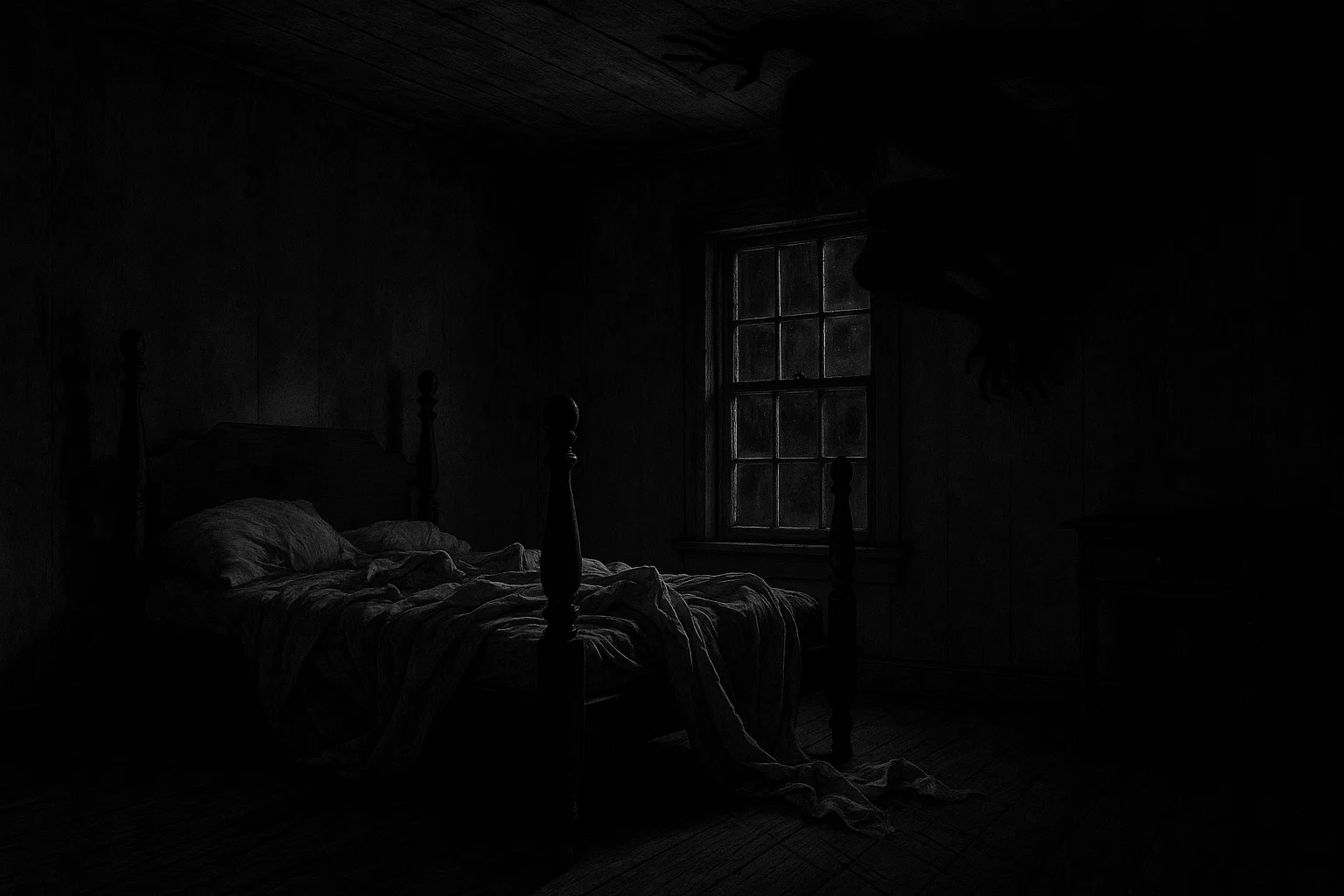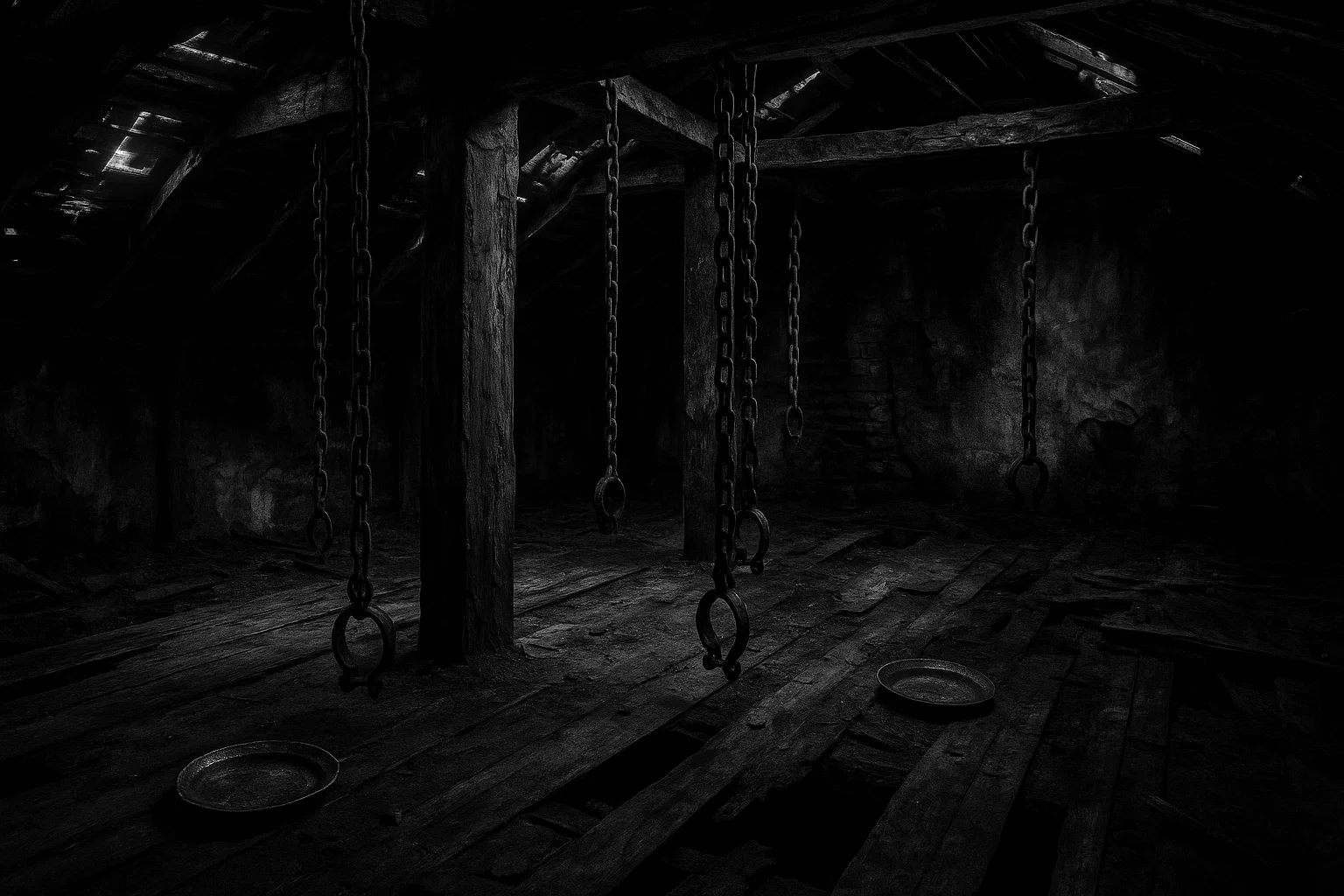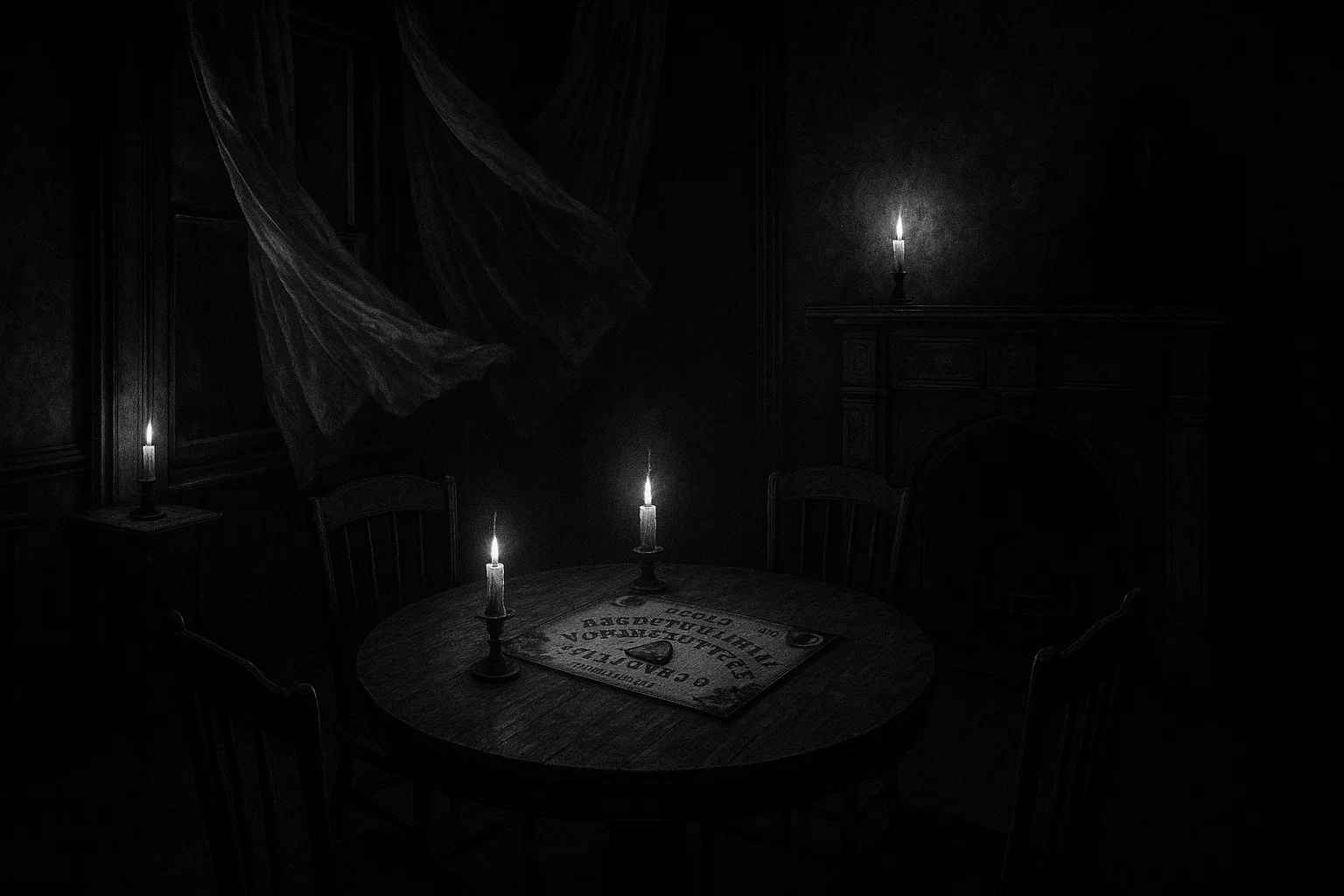Andromalius, a formidable demon in occult lore, reigns as a Great Earl in the infernal hierarchy. Known for his chilling ability to punish thieves and uncover deceit, he embodies malevolent justice.
This shadowy figure, detailed in the Ars Goetia, commands fear with his serpent-wielding form. His powers tempt those seeking vengeance or hidden truths, drawing them into his dark influence.
This article explores the sinister essence of Andromalius, delving into his origins, abilities, and role in demonology, optimized for terms like Andromalius demon, Goetic demon, and infernal hierarchy.
Table of Contents
Overview
The table below summarizes critical details about Andromalius, the malevolent Great Earl:
| Aspect | Details |
|---|---|
| Name | Andromalius, Andromalius of Hell |
| Titles | Great Earl, Mighty Earl, Punisher of Thieves |
| Gender | Male |
| Role | Punishing thieves, revealing deceit, recovering stolen goods |
| Hierarchy | Great Earl, commanding 36 legions of infernal spirits |
| Servitors | 36 legions of lesser demons, unnamed in texts |
| Superior Demon | Likely Satanachia or Lucifer, though unspecified in grimoires |
| Powers | Punishes thieves, recovers stolen goods, reveals hidden treasures, exposes deceit and wickedness, manipulates minds (modern interpretations) |
| Appearance | Man holding a great serpent, symbolizing cunning and hidden knowledge |
| Etymology | Possibly from Greek andros (man) and Latin malus (evil), or Hebrew origins |
| Associated Figures | King Solomon, other Goetic demons, possibly linked to ancient serpent deities |
| Weaknesses | Not explicitly documented, likely bound by summoning rituals and holy names |
| Opposing Angel/Saint | Mumiah (speculative, Kabbalistic angel tied to Pisces) |
| Equipment/Tools | His sigil (seal for summoning), serpent as a symbol of power |
| Pantheon | Goetic demonology, Western occult tradition, infernal realm |
Etymology
The name Andromalius carries a dark, enigmatic weight in demonology. Its origins are unclear, adding to the demon’s sinister mystique.
One theory suggests a blend of Greek andros (man) and Latin malus (evil), implying a “malevolent man.”
This aligns with his role as a punisher of wrongdoers, embodying corrupt justice. Another speculation points to Hebrew roots, possibly linked to mal’ak (messenger or angel) combined with andros, suggesting a fallen or corrupted messenger.
Some occult scholars propose connections to ancient terms for serpent deities, given his serpent imagery, though no direct linguistic evidence supports this.
The name’s ambiguity fuels its ominous reputation, as it lacks clear ties to pre-Christian mythologies, unlike demons like Astaroth or Baal. In grimoires, Andromalius stands alone, a unique creation of the Ars Goetia, possibly crafted to evoke fear and mystery.
This lack of clarity makes the name a focal point for occultists, who see it as a cipher for his deceptive powers.
You May Also Like: Red or Blue? | Horror Story
What Does the Demon Andromalius Look Like?
Andromalius appears as a man clutching a great serpent, a chilling image rooted in the Ars Goetia. The human form suggests authority and cunning, while the serpent symbolizes deceit, wisdom, and hidden knowledge.
His visage is not described as monstrous, unlike other demons, which enhances his insidious nature. The serpent, often coiled or writhing, represents his ability to ensnare and expose secrets.
Some modern interpretations depict him with piercing eyes or a shadowy aura, emphasizing his malevolent presence. This form makes Andromalius approachable yet terrifying, luring summoners into his trap of infernal justice.
Historical and Mythological Background
Andromalius emerges primarily from the Ars Goetia, a 17th-century grimoire within the Lesser Key of Solomon. This text, attributed to King Solomon’s legendary control over demons, lists him as the 72nd spirit, a Great Earl commanding 36 legions.
His origins are obscure, with no clear ties to ancient mythologies, unlike demons like Astaroth, linked to the goddess Astarte, or Baal, tied to Canaanite deities.
This lack of pre-Goetic references suggests Andromalius may be a creation of medieval occultists, designed to embody specific fears of theft and deceit.
Potential Connections to Ancient Deities
While Andromalius lacks direct mythological predecessors, his serpent imagery invites comparisons to serpent deities across cultures.
In Mesopotamian mythology, Ningishzida, a god of snakes and the underworld, shares symbolic traits, though no direct link exists. Similarly, the Egyptian Apep, a chaotic serpent deity, mirrors Andromalius’s association with hidden chaos, but no textual evidence connects them.
In Norse mythology, the serpent Jörmungandr encircles the world, symbolizing hidden threats, akin to Andromalius’s role in uncovering deceit.
These parallels are speculative, as Andromalius appears uniquely Goetic, possibly crafted to fill a niche in the infernal hierarchy.
Modern Fictional Narratives
In contemporary works, Andromalius appears in fictional contexts, expanding his lore. A notable example is Andromalius, Take Two: Goetic Stories by Camelia Elias, where he is portrayed as a cunning mirror of Lucifer.
In these tales, Andromalius spies on mortals, manipulates dreams, and divines hidden truths, tempting characters into moral decay. Another modern depiction places him in occult rituals, where he deceives practitioners by offering justice while sowing discord.
You May Also Like: Gozu Urban Legend: The Story That Allegedly Kills You
Historical Mentions
The table below details the primary historical mention of Andromalius:
| Text/Grimoire | Description | Excerpt |
|---|---|---|
| Ars Goetia (Lesser Key of Solomon) | Andromalius, the 72nd spirit, is a Great Earl commanding 36 legions. He appears as a man with a serpent, punishing thieves, recovering stolen goods, and revealing hidden truths and wickedness. | “The Seventy-second Spirit in Order is named Andromalius. He is an Earl, Great and Mighty, appearing in the Form of a Man holding a Great Serpent in his Hand. His Office is to bring back both a Thief, and the Goods which be stolen; and to discover all Wickedness, and Underhand Dealing; and to punish all Thieves and other Wicked People and also to discover Treasures that be Hid. He ruleth over 36 Legions of Spirits. His Seal is this, the which wear thou as aforesaid […]” |
No earlier texts, such as Johann Weyer’s Pseudomonarchia Daemonum (1577) or Collin de Plancy’s Dictionnaire Infernal (1818), mention Andromalius, reinforcing his unique place in the Ars Goetia. His absence from these works suggests he was a later addition to demonological lore, possibly crafted to address specific societal fears of theft and betrayal.
Andromalius Powers and Abilities
Andromalius wields a sinister array of powers, making him a formidable force in demonology. His abilities, rooted in the Ars Goetia, focus on punishment and revelation, with modern interpretations adding darker dimensions.
Below are his key powers:
- Punishing Thieves: Andromalius can inflict torment on those who steal, delivering infernal justice. This power tempts summoners seeking vengeance, drawing them into his corrupt influence.
- Recovering Stolen Goods: He can locate and return stolen items, often with the thief in tow, exploiting the summoner’s greed or desperation.
- Revealing Hidden Treasures: Andromalius uncovers concealed wealth, luring mortals with promises of riches while ensnaring their souls.
- Exposing Wickedness and Deceit: His ability to reveal hidden sins and dishonest dealings makes him a dangerous entity, as he can expose the summoner’s own secrets, leading to paranoia or ruin.
- Mind Manipulation (Modern): Contemporary occult narratives suggest Andromalius can manipulate thoughts, planting seeds of doubt or discord. This power, though not in the Ars Goetia, aligns with his deceptive nature, tempting mortals into self-destruction.
- Inducing Despair (Modern): Some modern sources claim he can instill despair or suicidal thoughts, a chilling extension of his revelatory powers, exploiting emotional vulnerabilities.
These abilities make Andromalius a demon of calculated malevolence. Unlike demons who rely on brute force, his powers manipulate human weaknesses, such as greed, vengeance, or guilt.
Summoners risk becoming entangled in his web, as his justice often comes with a hidden cost, corrupting their intentions.
You May Also Like: The Infamous Cursed Kleenex Commercial: Fact, Fiction, and Urban Legend
Andromalius’ Role in the Hierarchy of Hell
Andromalius holds the rank of Great Earl in the infernal hierarchy, commanding 36 legions of lesser demons.
In the Ars Goetia, ranks include kings, dukes, princes, marquises, presidents, and earls, with kings like Paimon (200 legions) or Bael (66 legions) outranking earls. As a Great Earl, Andromalius wields significant power, comparable to Marbas (president, 36 legions) or Halphas (earl, 26 legions).
While the Ars Goetia does not specify a geographic domain, occult traditions place earls in regions of hell associated with judgment and punishment. Andromalius likely oversees a shadowy realm where thieves and deceivers face torment, reflecting his role.
His domain might be a labyrinthine fortress, filled with traps for the wicked, symbolizing his serpent imagery.
The Ars Goetia does not explicitly name Andromalius’s superior, but demons like Satanachia, a commander of multiple Goetic spirits, or Lucifer, the ultimate ruler, likely hold authority over him.
His position as an earl places him below kings and dukes, suggesting a chain of command where he reports to higher powers.
Andromalius may ally with demons like Vassago or Murmur, who also reveal secrets, sharing a common purpose. However, he might clash with chaotic demons like Belial, whose lawlessness opposes his structured justice.
As a Great Earl, Andromalius maintains a delicate balance in hell’s hierarchy. His punitive role suggests rivalries with demons who promote chaos or protect thieves.
His alliances with revelatory demons strengthen his influence, making him a key player in infernal politics.
Astrological Associations and Symbolism
Andromalius is steeped in astrological and symbolic significance, enhancing his sinister allure.
Below are his key associations:
- Zodiac Sign: Pisces (March 10–14), linked to intuition, deception, and hidden depths, aligning with his revelatory powers.
- Planet: Mercury, symbolizing communication, cunning, and duality, reflecting his ability to expose deceit.
- Element: Air, tied to Mercury, representing intellect and manipulation, key to his mental influence.
- Metal: Iron, symbolizing strength, protection, and unyielding justice, mirroring his punitive role.
- Crystals: Amethyst (linked to Pisces, for intuition) and black onyx (for protection and grounding), often associated in modern occult practices.
- Colors: Purple (Piscean intuition) and black (mystery and power), evoking his enigmatic nature.
- Numbers: 7 (spiritual and mystical) and 36 (tied to his legions), symbolizing his authority.
- Days: Wednesday (Mercury’s day), ideal for invoking his powers, per occult traditions.
- Symbolism: The serpent, a universal emblem of cunning, transformation, and hidden knowledge, underscores his role as a revealer of secrets.
These associations amplify Andromalius’s dark charisma, tempting summoners with promises of insight while ensnaring them in his influence. His Piscean connection suggests emotional manipulation, while Mercury enhances his intellectual dominance.
Andromalius Sigil
The sigil of Andromalius, as described in the Ars Goetia, is a complex geometric design used to summon and control him.
This seal, unique to each Goetic demon, acts as a magical anchor, binding Andromalius to the summoner’s will. It features intricate lines and curves, often depicted in grimoires as a circular pattern with angular flourishes, symbolizing his serpentine nature.
Summoners must wear or inscribe this sigil during rituals, as it ensures obedience but also carries the risk of his malevolent influence seeping into their psyche.
You May Also Like: The Rake | Horror Story
Comparison with Other Demons
| Demon | Appearance | Powers/Abilities | Role in Hell | Comparison with Andromalius |
|---|---|---|---|---|
| Astaroth | A foul angel riding a dragon, holding a viper | Reveals secrets, grants knowledge of sciences, tempts with laziness | High-ranking duke, advisor to hell’s elite, manipulates through knowledge | And-romalius and Astaroth both uncover secrets, but Astaroth’s focus on intellectual temptation contrasts with Andromalius’s punitive justice. Astaroth’s dragon and viper imagery suggests chaos, while Andromalius’s serpent symbolizes controlled cunning. Astaroth outranks Andromalius, commanding more legions. |
| Belial | A beautiful angel in a fiery chariot | Grants familiars, promotes lawlessness, secures favors | Kingly ruler, sows discord and rebellion | Belial’s chaotic, favor-granting nature clashes with Andromalius’s ordered punishment of wrongdoers. Belial’s regal appearance contrasts with Andromalius’s human-serpent form. As a king, Belial holds higher authority, likely viewing Andromalius as a subordinate enforcer. |
| Murmur | A warrior on a griffin, crowned, with trumpets | Compels truthful answers, reveals hidden truths, teaches philosophy | Oversees communication and truth in hell’s courts | Murmur shares Andromalius’s truth-revealing powers, but focuses on philosophical discourse rather than punishment. Murmur’s griffin contrasts with Andromalius’s serpent, suggesting mobility versus grounded authority. Their ranks are similar, but Murmur’s dual title may grant slight precedence. |
| Vassago | A gentle-looking spirit, form unspecified | Divines past and future, uncovers hidden things | Scout and diviner for hell’s hierarchy | Both reveal hidden truths, but Vassago’s temporal divination (past/future) differs from Andromalius’s focus on present deceit and theft. Vassago’s ambiguous form contrasts with Andromalius’s defined human-serpent image. Vassago’s princely rank places him above Andromalius. |
| Ronove | A monstrous form, staff in hand | Teaches rhetoric, grants favor, provides familiars | Enhances social influence and eloquence in hell | Ronove’s social manipulation contrasts with Andromalius’s punitive focus. Ronove’s monstrous appearance differs from Andromalius’s human guise, emphasizing terror over authority. Their ranks are comparable, but Andromalius commands more legions, suggesting greater military power. |
| Alloces | A lion-faced warrior on a horse, fiery eyes | Causes love/strife, reveals secrets, teaches astronomy | Instigator of conflict and knowledge | Both reveal secrets, but Alloces also manipulates emotions, unlike Andromalius’s justice-driven role. Alloces’s fiery, beastly form contrasts with Andromalius’s human-serpent image. Their legion count is equal, but Alloces’s duke rank outranks Andromalius. |
| Amy | A flaming fire, later a human form | Reveals treasures, grants familiars, divines future | Treasurer and diviner in hell’s ranks | Amy and Andromalius both uncover treasures, but Amy’s focus includes future divination and familiars, broader than Andromalius’s punitive scope. Amy’s fiery form contrasts with Andromalius’s grounded appearance. Equal legions, but Amy’s presidential rank is higher. |
| Forneus | A sea monster or great fish | Causes love/hate, teaches arts and languages | Manipulates emotions and education | Forneus’s emotional and educational focus differs from Andromalius’s justice and punishment. Forneus’s aquatic form contrasts with Andromalius’s terrestrial serpent imagery. Andromalius commands more legions, suggesting greater influence despite similar ranks. |
| Halphas | A stock dove or stork | Builds towers, destroys enemies’ hopes, incites war | Architect of infernal strongholds | Halphas’s destructive and warlike role contrasts with Andromalius’s focus on retribution and revelation. Halphas’s bird form differs from Andromalius’s human-serpent image, symbolizing flight versus grounding. Both are earls, but Andromalius’s larger legion count suggests greater power. |
| Vepar | A mermaid or siren | Causes storms, guides ships, inflicts wounds | Ruler of infernal seas and destruction | Vepar’s chaotic, aquatic destruction opposes Andromalius’s structured justice. Vepar’s mermaid form contrasts with Andromalius’s human-serpent appearance, highlighting elemental differences. Vepar’s duke rank outranks Andromalius, with slightly fewer legions. |
Conclusion
Andromalius, the sinister Great Earl of Hell, embodies the dark allure of infernal justice. His powers to punish thieves, recover stolen goods, and expose deceit make him a formidable figure in the Ars Goetia.
His serpent-wielding form and astrological ties to Pisces and Mercury enhance his mystique, tempting summoners with promises of retribution and hidden knowledge.
Yet, his malevolent nature ensures that such bargains come at a steep cost, ensnaring mortals in his web of corruption.
His obscure origins and limited historical mentions add to his enigmatic presence, while modern narratives expand his role as a cunning manipulator.
As a Great Earl commanding 36 legions, Andromalius occupies a significant yet perilous place in hell’s hierarchy, balancing order and chaos.
For those drawn to demonology, he represents a chilling paradox: a demon of justice whose true aim is to corrupt and dominate, leaving a legacy of fear and fascination in occult lore.

